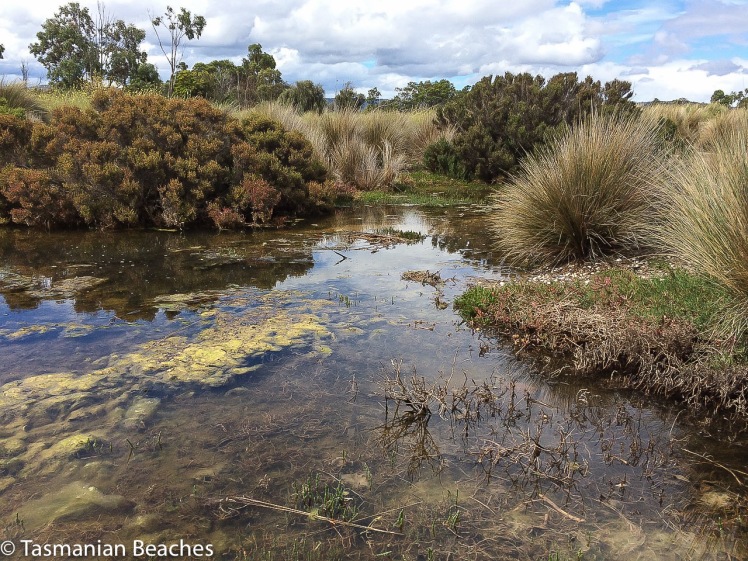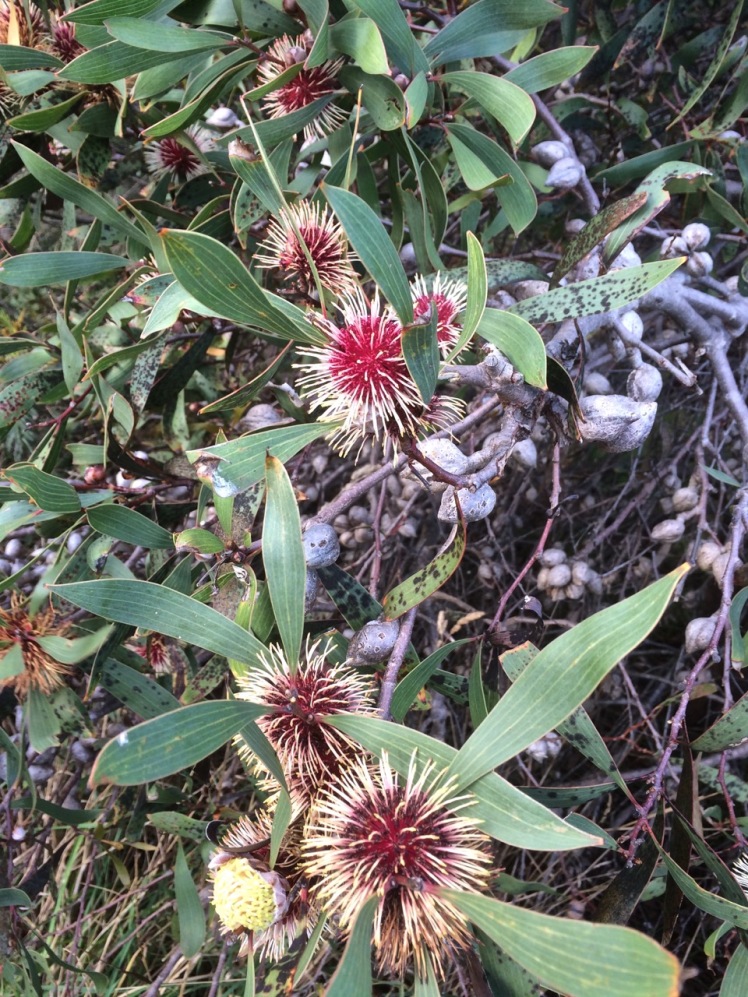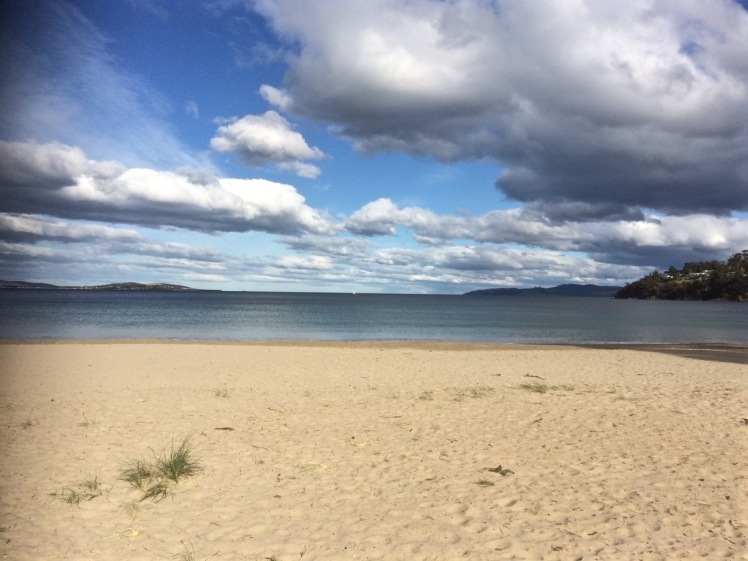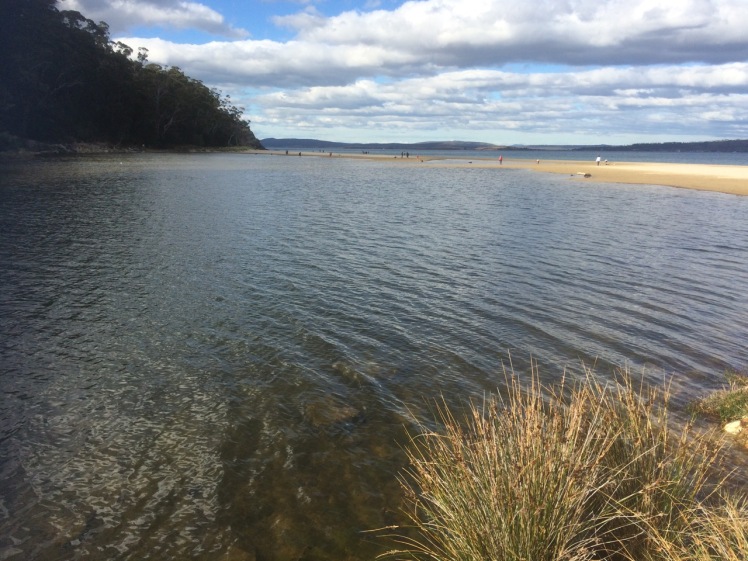Frederick Henry Bay: Pittwater Nature Reserve: Penna Beach
Touching the Land of the Moomairremener Band

Penna Beach
When you fly into Hobart’s airport, peninsulas of land and bodies of water spread out below. One of these watery stretches is the large, relatively shallow estuary/lagoon that forms Pitt Water Nature Reserve and Orielton Lagoon (east, and just off this map). The Coal River, Penna and Iron Creek pour freshwater into it.
This striking body of water is crossed by McGees Bridge and the Sorell causeway, both tethered to a suburbanised headland in the middle of the lagoon called Midway Point. It enters the sea between Seven Mile Beach spit and Lewisham.
I love the view coming in to land, love crossing the causeways, the seagulls hanging in the sky, the salt spray… but it’s not an area that I’ve ever explored. I last flew over it a few weeks ago, returning from a postponed yacht delivery in Queensland. This time I went to the map to find out more about it. The names of the places surrounding Pitt Water intrigued me – Shark Point Road, Penna and Frogmore Creek. It was clearly time to go adventuring in the lands of the Oyster Bay and Big River tribes. The Moomairremener band in particular, spent a lot of time around Pitt Water. Their presence is there in the middens and quarries they left behind.
At Midway Point we turned right along Penna Road and quickly found ourselves in countryside with the water to our left. Then we turned left along Shark Point Road.
This road runs along the northern shore. There’s a row of houses, some beautiful, others not, but if you don’t mind the sight of traffic crossing the causeway in the distance, then the northern shore is a secret gem. The dirt road takes a corner and heads north, up into farmland, home to Highland cattle.
Shark Point Road, it turns out, gets its name because this estuary is much loved by sharks, including the gummy shark. They come here to forage and to breed. It’s the nursery for their babies and while they’re unlikely to nibble a kayak I may put on hold indefinitely my plan to paddle its perimetre. In recognition of its importance to the sharks it was declared their refuge and no-take area in 1995. There has to be something in this for people, right? These sharks are fished commercially.
We turned around and sought out Penna Beach on this northern shore and found that it’s in a part reserve, part dog exercise zone. We walked down to it through tussocks and an astonishing diversity of weeds, including box thorn and boneseed.
White shells clad much of the beach and they’re there again in the soil profile behind the beach, along with a thin trail of pebbles denoting an earlier landscape. We figured this is the same shell layer that is visible at Ralph’s Bay, that beautiful embayment on the Derwent River. Strolling along its full, extremely skinny extent we also noticed that the rising sea had nibbled into the soils behind the beach so that only the roots of the tussocks and a depth of about about 10 cm of loam defended the land from the fluid invader gaining might millimeter by millimetre.
As we walked along we discovered some lovely little salt marshes and wetlands behind the beach, although some had an algal infestation. We didn’t see the little blue butterfly that forages here but we heard some brief birdsong emerging from the tussocks. I thought the area could have provided a wonderful habitat for nesting birds but I suspect there’s far too much human disturbance for them to make a go of it. It was only later that I discovered that this area is renowned for its salt marsh diversity and rare plant species.
Once at least seven types of migratory birds flew here from Alaska to enjoy Tasmania’s summer. This estuary, since 1982, has been a RAMSAR site – in fact, the southernmost site on the East Australasian Flyway but given our interconnected world and development across both hemispheres, this hasn’t stopped numbers plummeting like a distressed stockmarket.
One little known fact about Pitt Water is that it is the home of a tiny, rare orange seastar (Parvulastra vivipara), one of very few anywhere that gives birth to live young.
People like to fish on the seaward side of McGees Bridge and they like to bird watch at Sorell Causeway and the Waterview Sanctuary. Levees have messed with the tides that supported Pittwater although there’s a bit more flushing happening these days. Farmers have spread fertiliser on their fields, fostering algal growth in the lagoons. Dams on the Coal River have stymied freshwater flow. Seagrass has withered.
This area really symbolises the way we are hammering the lovely world but here’s a small plus. On all the slender extent of Penna Beach I only found two pieces of plastic litter, and I thought that a small solace.
Sources: Pitt Water and Orielton Lagoon Ramsar site and in particular, the NRM South Report to the Community (2012)






















































